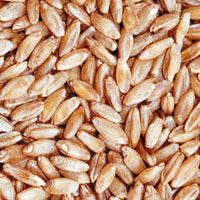A multi-criteria qualitative tool for the sustainability assessment of organic durum wheat-based farming systems designed through a participative process

Accepted: 23 December 2020
Appendix: 141
HTML: 95
All claims expressed in this article are solely those of the authors and do not necessarily represent those of their affiliated organizations, or those of the publisher, the editors and the reviewers. Any product that may be evaluated in this article or claim that may be made by its manufacturer is not guaranteed or endorsed by the publisher.
Highlights
- BioDurum_MCA is an effective tool for sustainability assessment of durum wheat organic Italian production systems.
- Hierarchic structure of the tool reflects the sustainability issues and priorities expressed by involved stakeholders.
- MCA tools can support a holistic evaluation of farm sustainability performances in the frame of post-2020 CAP.
The agriculture sustainability assessment is a difficult issue for the coexistence of conflicting objectives and the multidimensionality of the performances. The environmental, economic and social pillars need to be simultaneously considered in an assessment to evaluate potential synergies and trade-offs of the agricultural processes within and among the attributes of the dimensions in both implemented systems (ex-post analysis) and potential options (ex-ante analysis). Among several sustainability assessment methods, tools based on multi-criteria analysis (MCA) are increasingly adopted in evaluating sustainability in agriculture. The aim of this work was to present the MCA tool developed in the framework of the BioDurum project for the sustainability assessment of organic farms located in southern Italy and characterised by durum wheat-based crop rotations. The tool was entirely designed through a participatory process and it was realised using the open-source DEXi software that have demonstrated to be particularly suitable for creating qualitative multi-criterial hierarchic models with the engage of stakeholders. The hierarchic structure of BioDurum_MCA tool was resulted composed by 64 indicators and 45 aggregated attributes articulated in three branches representing the agro-environment, economic, and social sustainability pillars. The articulated structure of the tool reflected the complexity and the sustainability issues and priorities expressed by the involved stakeholders. The tool was tested in four Italian organic farms presenting different agro-environmental and socio-economic patterns for their ex-post evaluations and in three different ex-ante production systems identified in compliance with the Italian regulation concerning the requirements of the rotations to be implemented in organic farming. The results highlighted the well discriminatory power of the tool. The best overall sustainability scores were reached in both ex-post and ex-ante analysis by the well diversified cereal farming systems with processed products sold through short supply chain mechanisms. BioDurum_MCA has proved to be a feasible tool to identify strengths and weaknesses of organic durum wheat-based production systems. Its adoption can support the definition of specific interventions for the sector in the Italian Strategic National Plan of the Common Agricultural Policy. Further improvements in the threshold classes of some indicators by using the tool in a wider number of Italian durum wheat based organic farms will increase model sensitivity and reliability of the results. The final version of the tool was released in November 2020 and it is freely available to users (http://bit.ly/biodurum).
How to Cite
PAGEPress has chosen to apply the Creative Commons Attribution NonCommercial 4.0 International License (CC BY-NC 4.0) to all manuscripts to be published.

 https://doi.org/10.4081/ija.2021.1785
https://doi.org/10.4081/ija.2021.1785



